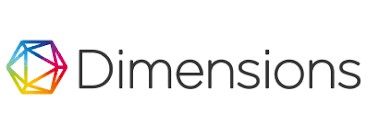Survei Pola Konsumsi Protein Hewani, Sayur Dan Status Gizi Pada Mahasiswa Analis Kesehatan Poltekkes Kemenkes Bengkulu
Abstract
Background: Data from the World Health Organization (WHO), records that 3.2% of adolescent girls and 5.9% of boys in the Asian adolescent population were obese in 2016. According to global data, 8.4% of adolescent girls and 12.4 % of boys are teenagers who fall into the Underweight category. 2018 Basic Health Research Data (RISKESDAS). Method: The design of this research is cross sectional. The total sample of 52 level 2 health analyst students from the Bengkulu Ministry of Health Polytechnic was taken using the simple random sampling method. Primary data includes the identity of respondents and consumption patterns of animal protein and vegetables using FFQ and for measuring body height using a microscope and weight using a step scale to determine the nutritional status of students. Results: Based on the research results, it shows that the 52 respondents often consumed 25.0% animal protein and rarely consumed 75.0%. and for vegetable consumption. Based on the research results, it shows that with 52 respondents, 32.7% often consume and rarely consume 67.3%, while nutritional status is underweight 33, normal 8, overweight 6, obese 5. Conclusion: some students have good and bad consumption of animal protein, good and bad vegetable consumption. For parents and respondents to increase the portion of vegetable and animal protein and consume a variety of animal and vegetable types more often as recommended.
Copyright (c) 2024 JGK: Jurnal Gizi dan Kesehatan

This work is licensed under a Creative Commons Attribution-ShareAlike 4.0 International License.
Authors who publish with this journal agree to the following terms:
- Authors retain copyright and grant the journal right of first publication with the work simultaneously licensed under a Creative Commons Attribution License that allows others to share the work with an acknowledgement of the work's authorship and initial publication in this journal.
- Authors are able to enter into separate, additional contractual arrangements for the non-exclusive distribution of the journal's published version of the work (e.g., post it to an institutional repository or publish it in a book), with an acknowledgement of its initial publication in this journal.
- Authors are permitted and encouraged to post their work online (e.g., in institutional repositories or on their website) prior to and during the submission process, as it can lead to productive exchanges, as well as earlier and greater citation of published work










